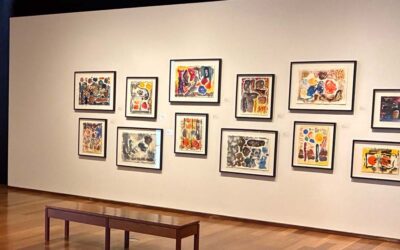Myth #2: It’s Easy to Digitize Museum Collections

Rachael Cristine Woody
Last week we kicked off a museum myth series on collection digitization with Myth #1: You Should Digitize all the Things!. We continue the series this week with the myth that it’s “easy” to digitize museum collections.
Easy in this context can mean that it’s cheap, fast, and easy from a technical perspective to digitize museum items. In addition to these descriptors for digitization not being 100% accurate, they’re also incredibly subjective. So, let’s break this myth down by focusing on the words and the elements involved for each.
Myth #2: It’s easy to digitize museum collections.
Digitization is Cheap
Digitization isn’t cheap. It can appear that way if you already own the right digitization equipment. Or, if you’ve made a quick scan of something for personal use and aren’t compelled by best practices or museum process to work further with the digital file. You also need staff in place who are trained in object handling, digitization equipment, and the process they need to follow to meet best practices. If you have both in place—people and equipment—then you can capitalize on that investment and only need to account for the new costs the project brings.
Here are the digitization costs to consider:
- Equipment: camera, copy stand, scanner, audio-visual migration, etc.
- Staff: staff who can digitize, digital file name and manage, create metadata (catalog), and publish online.
- Collections Management System (CMS): somewhere to catalog the item and publish online, this is usually via the museum CMS.
- Storage: digital storage to keep digital files and of a large enough capacity to contain the high-quality digital files.
“Cheap” is a very subjective term. What a donor considers a cheap cost is likely not what you would consider a cheap cost. Digitization is an investment in the right equipment, people, and processes. None of these items are cheap, and some have annual costs (and increases) to account for.
Tip: Research and gather prices for equipment you need as well as staff or contractor costs. Having these costs available to reference will help to ensure that any digitization conversations are realistic about cost from the beginning.
Digitization is Fast
Digitization of a museum item is a process. At a minimum, the process will involve the following steps:
- Select the item and prepare it for imaging. Preparation can be as simple as dry dusting a ceramic surface, or work performed by a trained conservator.
- Digitize/Image/Scan the item.
- Assign a digital file name according to museum practice.
- Place the file in the appropriate digital storage location.
- Research the item and create metadata for the catalog record. Make sure to create data for each of the required fields that meet industry and internal best practices.
- Enter and review the catalog record data in the CMS.
- Publish the digital file with catalog record via the CMS to the online (public-facing) side of the platform.
Each of these steps takes time and “fast” is a subjective term. When a donor or your museum director thinks something is “fast”, what do they consider that number to be? 5 minutes? 50 minutes? And when time duration for the task is multiplied by the number of items to digitize? Is it “fast” then? When it comes to digitization, we need to talk specific numbers so that everyone is on the same page regarding how long parts of the digitization process will take.
Tip: If you haven’t already done so, I recommend timing each part of the process and calculating an average time per step, and then total time per item. Knowing how long the digitization and cataloging process takes from beginning to end can inform your work for better project estimations as well as help convey internally or to donors and grants that you know with confidence how long a particular project will take.
Digitization is Technically Easy
This is one of my favorite of the subjective terms used to describe museum digitization because of just how far it is from the truth. Digitization within a museum is a multi-step process that references several sets of industry and museum best practices. It requires interaction with several sets of equipment and software to complete the process. It’s not easy. Even if you know how to do it, it’s not an easy (read: simple) process.
Tip: Those who believe digitizing a museum collection is easy have a real gap in their knowledge base. If it seems “easy” to them, that may be because they think you can take a picture with your phone and post it as easily as they post to Instagram. If this person is a museum stakeholder, then I recommend spending the time and energy to gently educate them on just how not easy museum digitization is.
Conclusion
This concludes our post on the Myth #2: It’s easy to digitize museum collections! Next week we consider the opposite myth—that it’s too hard to digitize museum collections.
Additional Reading
Considering Museum Digitization Tools by Item Type
How to Choose the Right Tools for Museum Digital Projects
How to Construct a Museum Digitization Equation
Include these Museum Digitization Standards in Your Next Project

Rachael Cristine Woody
If you’d like to learn more about this topic, register here for Rachael’s upcoming webinar, “5 Museum Digitization Myths to Delete Forever” on May 25, 2022. Rachael Cristine Woody advises on museum strategies, digital museums, collections management, and grant writing for a wide variety of clients. In addition to several titles published by Lucidea Press, she is a regular contributor to the Think Clearly blog and an always popular presenter. And remember to check out Lucidea’s Argus solution for powerful and innovative museum collections management.
Never miss another post. Subscribe today!
Similar Posts
From Preservation to Resilience: An Introduction to Building Resilient Digital Collections
Preserving a digital collection is a job that is never done. But what if we shifted our focus from preservation to building digital resilience?
Client Spotlight: MacLaren Art Centre Goes Beyond Collections Care to Access and Growth
“As our needs evolved, it became clear that our existing CMS was no longer working for us. Not only do we need to perform basic collections care, we need a system that will support public access, enable growth, and match our innovative strategies.”
Museum Collections Online: Digital Storytelling Blog Series Roundup
An overview of 10 blog post series that highlight how museums can leverage online collections and digital storytelling platforms, strategies, tools, and best practices.
How Museums Can Broaden Access and Improve Accessibility with Digital Storytelling
Museum expert Rachael Cristine Woody explains how digital storytelling expands access and improves accessibility of museum collections with inclusive multimedia formats.




Leave a Comment
Comments are reviewed and must adhere to our comments policy.
0 Comments